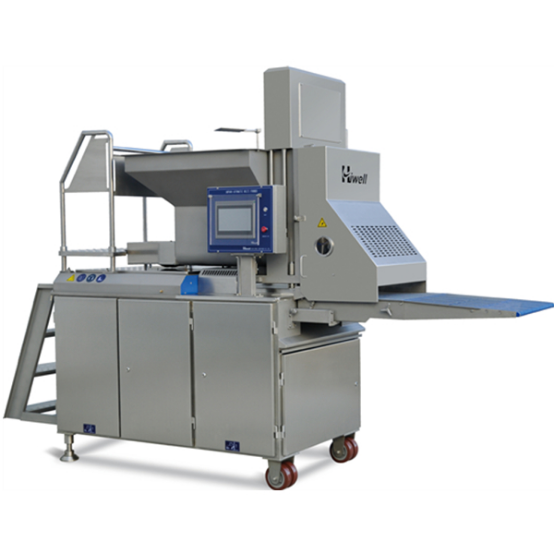Food forming machines: from innovation to practical applications

Food forming machines with efficiency and precision are achieved using innovative technology and engineering design. Here are the steps from innovation to practical application:
Technological Innovation: Innovation is essential in driving forward the design and production of efficient and precise food forming machines. At this phase, researchers and engineers collaborate on creating new technologies and solutions to enhance efficiency and precision while increasing precision of forming machines - this may involve innovations related to machine vision, machine learning, sensor technology, automated control systems or any number of areas beyond these basic categories.
Prototyping: Once an innovation has been implemented, its next step should be designing and creating a prototype food forming machine. To do this effectively will take cooperation among engineers and designers so as to achieve an attractive prototype machine which fits both innovative technology requirements and food processing characteristics.
Experimental Testing: Once built, prototype machines need to undergo experimental testing in order to assess their functionality and performance. At this point, various tests such as efficiency in material formation, accuracy, speed and reliability must be administered on them for evaluation purposes. Depending on these test results, adjustments or improvements might need to be made on them as a result of them.
Manufacturing Production: After experimental tests are complete and improvements made, manufacturing production starts in earnest. Manufacturers begin mass producing efficient and precise food forming machines based on design specifications and requirements - including procuring components, assembly, commissioning and quality control procedures.
Practical Application: Once food forming machines have been manufactured and produced, they will be supplied directly to food processing enterprises for practical implementation in production lines for mass food product creation. Operator training sessions will ensure optimal efficiency and consistency with these new machines.
As food forming machines are put through practical use, their performance and effectiveness will be assessed and reviewed for effectiveness. Based on feedback received and market demand, additional modifications may be needed in terms of design or functionality to make sure these machines perform as promised.
Innovation and practical application should be seen as interdependent processes, since technological development and market changes necessitate constant innovations and improvements for food forming machines to adapt to ever-evolving consumer needs and challenges. Innovation and practical application thus are interwoven processes which must remain ongoing processes for successful outcomes.
Technological Innovation: Innovation is essential in driving forward the design and production of efficient and precise food forming machines. At this phase, researchers and engineers collaborate on creating new technologies and solutions to enhance efficiency and precision while increasing precision of forming machines - this may involve innovations related to machine vision, machine learning, sensor technology, automated control systems or any number of areas beyond these basic categories.
Prototyping: Once an innovation has been implemented, its next step should be designing and creating a prototype food forming machine. To do this effectively will take cooperation among engineers and designers so as to achieve an attractive prototype machine which fits both innovative technology requirements and food processing characteristics.
Experimental Testing: Once built, prototype machines need to undergo experimental testing in order to assess their functionality and performance. At this point, various tests such as efficiency in material formation, accuracy, speed and reliability must be administered on them for evaluation purposes. Depending on these test results, adjustments or improvements might need to be made on them as a result of them.
Manufacturing Production: After experimental tests are complete and improvements made, manufacturing production starts in earnest. Manufacturers begin mass producing efficient and precise food forming machines based on design specifications and requirements - including procuring components, assembly, commissioning and quality control procedures.
Practical Application: Once food forming machines have been manufactured and produced, they will be supplied directly to food processing enterprises for practical implementation in production lines for mass food product creation. Operator training sessions will ensure optimal efficiency and consistency with these new machines.
As food forming machines are put through practical use, their performance and effectiveness will be assessed and reviewed for effectiveness. Based on feedback received and market demand, additional modifications may be needed in terms of design or functionality to make sure these machines perform as promised.
Innovation and practical application should be seen as interdependent processes, since technological development and market changes necessitate constant innovations and improvements for food forming machines to adapt to ever-evolving consumer needs and challenges. Innovation and practical application thus are interwoven processes which must remain ongoing processes for successful outcomes.